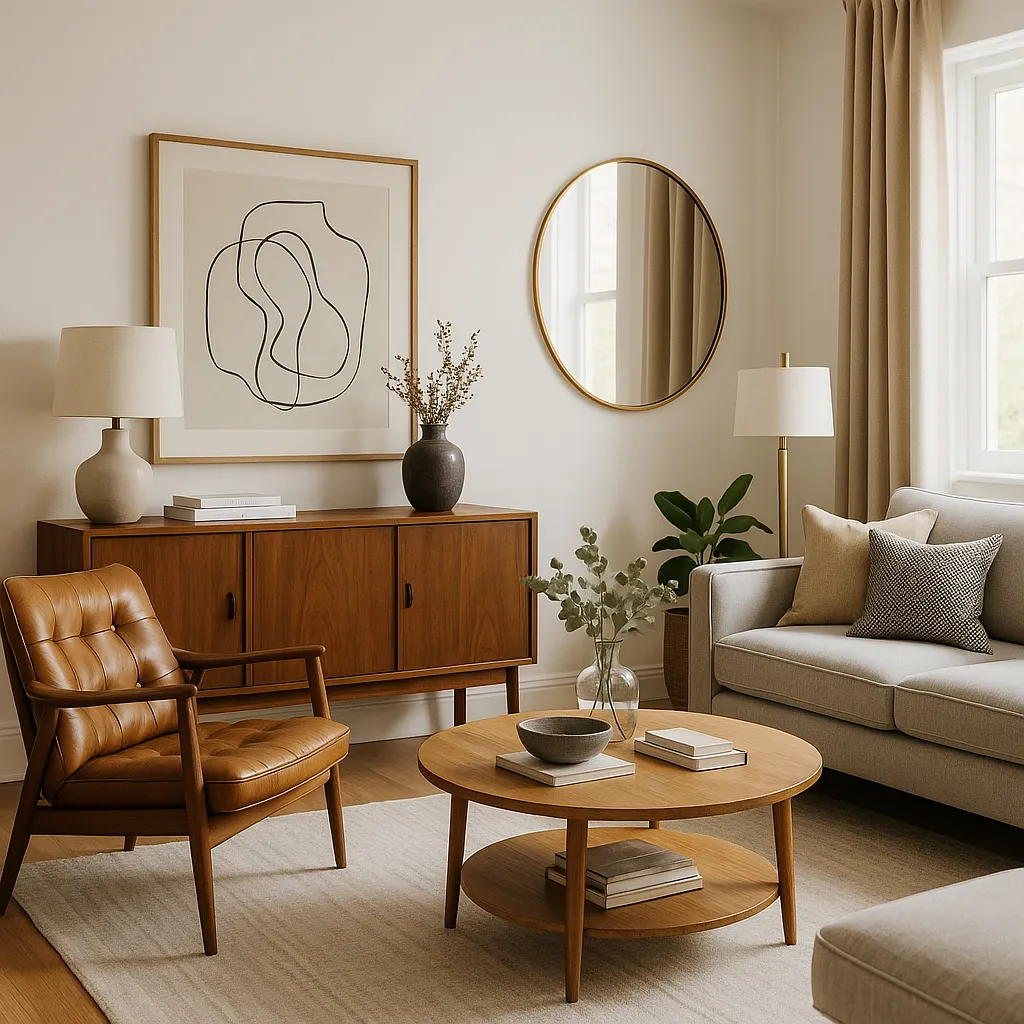Vintage pieces add character, charm, and a sense of history to your home. But decorating with them requires a delicate balance: done well, vintage items bring warmth and uniqueness; done poorly, they can make your space feel outdated or mismatched. The key is blending the old with the new in a way that feels fresh, intentional, and stylish. In this guide, you’ll learn how to incorporate vintage pieces into your home without making it feel like a time capsule.
Choose Quality Over Quantity
It’s tempting to collect every unique vintage piece you find—but restraint is essential. Too many old items can overwhelm the space and make it feel cluttered or dated.
Tips for Curating Vintage:
- Invest in a few standout pieces that are well-made and in good condition.
- Look for timeless materials like wood, brass, glass, or leather.
- Avoid items that are damaged beyond repair or overly worn.
- Edit regularly—swap items out to keep the space fresh.
Quality vintage pieces should enhance your decor, not dominate it.
Mix with Modern for Contrast
The best way to prevent a space from feeling dated is to combine vintage elements with clean, modern lines.
How to Balance:
- Pair a vintage dresser with a modern mirror or artwork.
- Combine a mid-century chair with a sleek side table or lamp.
- Style an antique trunk with contemporary textiles and accessories.
- Use vintage items as focal points against a neutral, minimal backdrop.
This contrast keeps your home feeling current while highlighting the charm of older pieces.
Keep the Color Palette Updated
Color is one of the biggest factors that can make vintage pieces feel dated. Stick to modern tones and mix them with vintage textures or silhouettes.
Color Strategy:
- Use neutral backdrops (white, beige, gray, soft sage) for balance.
- Add pops of vintage color in smaller doses (mustard, forest green, navy).
- Avoid color schemes that scream a specific era—unless that’s your intention.
- Refresh old furniture with updated upholstery or paint.
A fresh color palette ensures your vintage items feel curated, not accidental.
Incorporate One Statement Vintage Piece Per Room
To avoid visual overload, limit your vintage accents to one or two hero pieces per room.
Statement Piece Ideas:
- A vintage rug in the living room.
- An antique armoire in the bedroom.
- A reclaimed wood dining table.
- A mid-century sideboard or record console.
Let that item be the conversation starter—and build the rest of the room around it with simpler elements.
Use Vintage Accessories Thoughtfully
You don’t have to go big—smaller vintage pieces can also add charm without changing the architecture of a room.
Accessory Examples:
- Vintage books or records stacked on a shelf.
- Antique trays, bowls, or vases on a coffee table.
- A retro clock or mirror on the wall.
- Framed vintage postcards or black-and-white photos.
These accents are easy to rotate or update seasonally for visual freshness.
Blend Eras and Styles
Rather than sticking to one period (e.g., 1950s or Victorian), try mixing pieces from different eras for a more layered and collected look.
How to Do It:
- Combine mid-century furniture with modern minimalist lighting.
- Mix Art Deco accessories with contemporary upholstery.
- Use farmhouse tables with industrial-style chairs.
This approach gives your space soul and avoids looking like a themed set.
Update or Repurpose Old Finds
Sometimes vintage pieces just need a little love to fit seamlessly into modern decor.
Refresh Ideas:
- Reupholster chairs with updated fabrics.
- Paint or refinish wooden furniture in soft, modern tones.
- Add new hardware (like drawer pulls or knobs) to vintage dressers.
- Convert old ladders into shelving or towel racks.
Giving new life to vintage pieces keeps them functional and relevant.
Keep the Surroundings Simple
If your vintage item has lots of detail—ornate carving, bold colors, or heavy materials—let it breathe by simplifying the rest of the space.
Simplification Tips:
- Use white walls or minimal backgrounds.
- Style with modern lighting and textiles.
- Let the vintage piece stand alone on a blank wall or in an open corner.
Negative space helps your vintage piece feel intentional, not cluttered.
Don’t Be Afraid to Break the Rules
The best homes reflect the people who live in them—not strict design guidelines. If a vintage piece makes you happy, find a way to let it shine.
Personalized Approach:
- Display inherited or sentimental items with pride.
- Trust your instincts when mixing styles.
- Layer pieces over time instead of buying everything at once.
What matters most is that your home tells your story.
Final Thoughts: Timeless, Not Tired
Vintage decorating isn’t about copying the past—it’s about honoring it, reinterpreting it, and blending it into a modern lifestyle. With thoughtful curation, balanced styling, and a fresh color palette, vintage pieces can add warmth, depth, and authenticity to any room.
The key is contrast, creativity, and care. When old and new come together intentionally, your home becomes a space that feels both lived-in and timeless.
